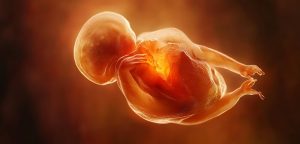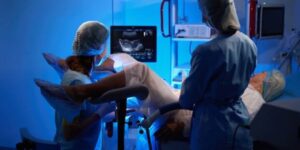An international research team led by Helmholtz Munich has gained detailed insights into how the spatial organization of genetic material in the cell nucleus of early embryos develops within the first hours after fertilization. Surprisingly, embryos show a high degree of flexibility in responding to disruptions in this process. The study, now published in Cell, shows that no single master regulator controls this nuclear organization. Instead, multiple redundant mechanisms ensure a robust and adaptable nuclear architecture that allows the embryo to correct errors in the initial organization of its cell nucleus.
The Classic Model of Nuclear Organization Called Into Question
When the egg and sperm fuse, a comprehensive reorganization of the DNA begins in the cell nucleus. Epigenetics plays a crucial role in this process by regulating gene activity through chemical modifications to the DNA and associated proteins. “We wanted to understand how these epigenetic programs influence gene activity and ensure that the cell performs its developmental tasks correctly,” explains study leader Prof. Maria-Elena Torres-Padilla, director at the Institute of Epigenetics and Stem Cells at Helmholtz München and professor at the Faculty of Biology at Ludwig-Maximilians-Universität (LMU). “Until now, it was not known whether a single central mechanism controls nuclear organization after fertilization. Our results show that after fertilization, several parallel regulatory pathways control nuclear organization and reinforce each other.”
To decipher the mechanisms of this restructuring, the researchers conducted a medium-scale disruption screening on mouse embryos. They used state-of-the-art molecular biology techniques to map epigenetic changes in early embryos (see info box below). The analyses revealed several redundant regulatory mechanisms involved in nuclear organization.
Furthermore, the experiments showed that, contrary to previous assumptions, gene activity is not strictly determined by its position in the cell nucleus. “The position of genes within the cell nucleus did not always correlate with their activity,” explains Mrinmoy Pal, first author of the publication and doctoral student at the Institute of Epigenetics and Stem Cells. Some genes remained active despite being relocated to an area of the cell nucleus traditionally considered inactive, while similar relocations in other cases led to a drastic reduction in gene expression. This challenges the classical model of nuclear organization and genome function.
Embryos Can Prevent Developmental Disorders Themselves
Even more surprising was the discovery that embryos can correct disturbances in nuclear organization themselves, even after the first division of the fertilized egg. If nuclear organization was disrupted before the first cell division, it could be restored during the second cell cycle. This suggests that early embryos are not only resilient, but also have mechanisms to compensate for errors in their initial nuclear organization.
The researchers discovered that this process is regulated by epigenetic markers inherited from the maternal egg cell. When these maternal signals are disrupted, the embryo can activate alternative epigenetic programs to eventually restore the correct nuclear organization, which may not originate from the mother. This suggests that embryos can use different starting points for their development to prevent developmental disorders.
Relevance for Aging and Disease
The results of the study could have far-reaching implications: Diseases such as progeria, a genetic disorder that causes premature aging, involve significant disturbances in DNA associated with the nuclear lamina. In addition, several types of cancer are associated with changes in the organization of the nuclear genome. “Our findings could help to better understand these mechanisms and, in the long term, develop new approaches to specifically influence epigenetic programs and thus improve disease progression,” says Torres-Padilla.
To investigate the epigenetic mechanisms underlying early nuclear organization, the researchers used a combination of high-resolution molecular techniques:
- Dam-ID: This method identifies DNA regions that interact with the nuclear lamina (a protein scaffold that lines the inside of the nuclear envelope and influences DNA structure), providing insight into the three-dimensional organization of the genome.
- RNA-seq: This technique measures gene activity in early embryos to analyze changes in gene expression.
- CUT&RUN and CUT&Tag: These methods enable the precise mapping of epigenetic marks that are crucial for the regulation of nuclear organization.
By combining these techniques, the research team was able to comprehensively map the dynamics of nuclear organization in the first hours of embryonic development and uncover its plasticity.





